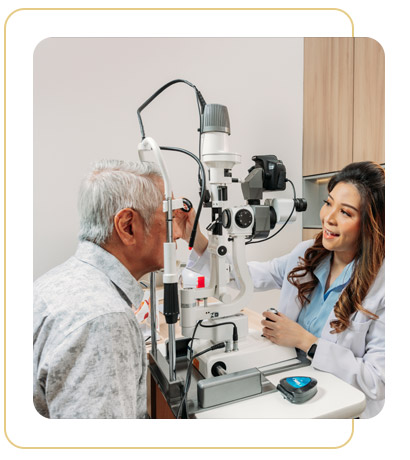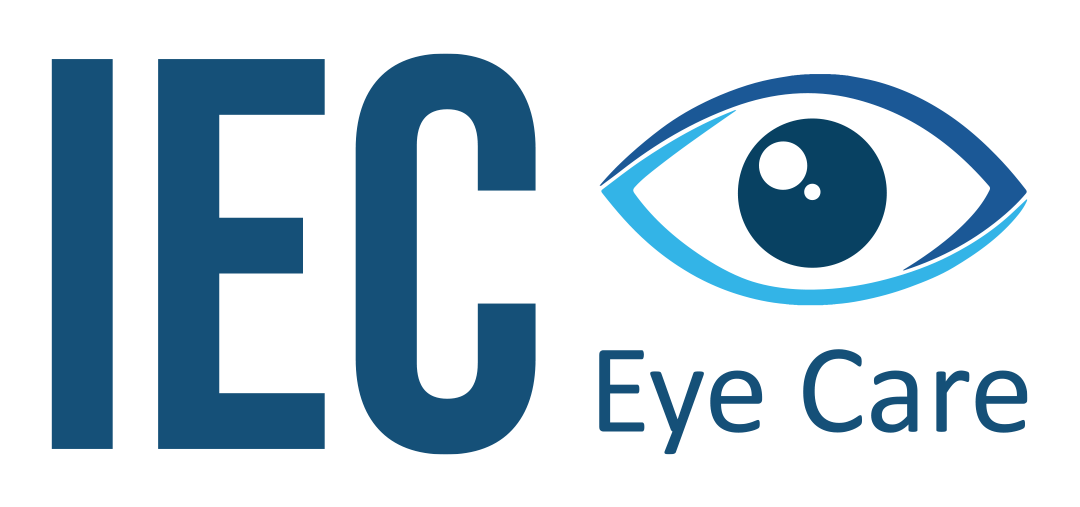Refractive Surgery (SILK, LASIK, PRK & Phakic IOL)

LASIK Surgery with ELITA SILK Technology for Perfect Vision Correction
IEC Eye Care offers refractive surgery services with the latest technology to correct vision issues such as myopia and astigmatism. We provide four types of refractive surgery procedures—SILK, LASIK, PRK (Photorefractive Keratectomy), and Phakic IOL (Intraocular Lens)—all designed to meet the unique needs of each patient.
SILK (Smooth Incision Lenticule Keratomileusis)
SILK is the newest refractive surgery method that uses femtosecond laser technology to correct myopia and astigmatism. IEC Eye Care is the only clinic in Indonesia offering this advanced procedure, which creates a lenticule within the cornea, extracted through a small incision without the need for a flap.
Advantages: Minimally invasive, reduced risk of dry eye, and fast recovery, with many patients reporting improved vision within 24 hours.
Risks: Minimal complications, but monitoring is essential post-surgery, as with all procedures.
LASIK (Laser-Assisted In Situ Keratomileusis)
LASIK is a popular procedure that involves creating a corneal flap to allow the laser to reshape the underlying layers.
Advantages: Fast, effective, and provides long-term results, often eliminating the need for glasses or contact lenses.
Risks: Some patients may experience dry eyes, glare, or temporary visual effects post-surgery.
PRK (Photorefractive Keratectomy)
PRK is similar to LASIK but does not involve creating a flap. Instead, the epithelial layer is removed before the laser reshapes the cornea.
Advantages: Suitable for patients with thin corneas, without the risk of flap-related complications.
Risks: Recovery may be longer than LASIK, with temporary visual discomfort lasting only a few days.
Phakic IOL (Intraocular Lens)
Phakic IOL involves implanting an artificial lens within the eye without altering the natural lens. This procedure is primarily for patients with high myopia who do not qualify for LASIK or PRK.
Advantages: Can correct myopia up to -20.00 diopters and is suitable for patients with thin corneas.
Risks: Potential risks include infection, increased intraocular pressure, and the future development of cataracts.
Each refractive surgery method has its own benefits and risks. SILK and LASIK are generally recommended for patients with mild to moderate myopia and astigmatism, while PRK is more suitable for those with thin corneas. Phakic IOL is an ideal choice for patients with high myopia who do not qualify for laser procedures. A consultation with an ophthalmologist is essential to determine the best method based on your specific vision needs and eye condition.
At IEC Eye Care, refractive surgery is designed to provide effective solutions for vision correction, with minimal discomfort and fast recovery times. Our range of methods allows patients to reduce or even eliminate dependence on glasses and contact lenses, enhancing their quality of life with clearer, optimized vision.
Causes:
Refractive surgery is a medical procedure that corrects refractive errors in the eye, such as myopia (nearsightedness), hyperopia (farsightedness), presbyopia, astigmatism, and similar conditions. Refractive errors can occur in both adults and children, often due to genetic factors or habits like excessive gadget use, watching television at close range, reading in dim lighting, and limited outdoor activity.
Symptoms:
Patients may consider refractive surgery if they experience symptoms like blurred vision that interferes with daily activities. Other signs include double vision, sensitivity to intense light, and frequent squinting to see clearly. Eye strain and headaches resulting from poor vision are also indicators that refractive surgery might be an effective solution for permanently improving visual quality.
IEC Eye Care offers four types of refractive surgery procedures: SILK, LASIK, PRK (Photorefractive Keratectomy), and Phakic IOL (Intraocular Lens). Our ophthalmologists will perform a comprehensive examination of the patient’s retinal condition before recommending and discussing the surgical options best suited to their vision needs.





Promo 1
All-in-One Addons for Elementor

Promo 2
All-in-One Addons for Elementor

Frequently Asked Questions
IEC Eye Care offers a variety of refractive surgery options, including SILK, LASIK, PRK, and Phakic IOL.
Typically, SILK and LASIK are recommended for patients with mild to moderate myopia and astigmatism. PRK is more suitable for those with thin corneas. For patients with high myopia who are not eligible for laser procedures, Phakic IOL can be an ideal alternative. However, we strongly recommend consulting with a specialist to determine the most suitable treatment based on your specific needs and eye condition.
The SILK refractive surgery method, currently available only at IEC Eye Care in Indonesia, utilizes the latest technology, ELITA SILK. This advanced technique eliminates the need for flap creation, as required in LASIK. Additionally, SILK offers a faster total recovery time, typically around 24 hours after the procedure.
SILK/LASIK procedures are generally safe and effective when performed by experienced LASIK professionals or specialists.
The results of LASIK and SILK are generally permanent because these procedures reshape the cornea, allowing the effects to last a lifetime. However, vision may change with age or due to other eye conditions.
LASIK procedures are generally painless. At IEC Eye Care, we offer LASIK surgery with a quick process, modern techniques, stitch-free, and maximum comfort. With the advanced ELITA SILK technology, IEC Eye Care—Indonesia’s premier LASIK center—is the only clinic in the country to use this equipment, ensuring optimal and safe results.
Don’t miss out on our latest promotions! Please contact our Customer Service team and check our social media for the latest updates on ongoing promotions.
The recovery time for SILK/LASIK can vary depending on the procedure and the patient's condition. LASIK typically requires around 1-3 days, while SILK generally takes about 24 hours to achieve full recovery after the surgery.
SILK offers several advantages over SMILE, such as a smaller, smoother incision, which allows for faster patient recovery. Additionally, the laser duration is shorter, with lower laser energy, further accelerating the healing process. SILK represents the latest technology in this field, and in Indonesia, it is exclusively available at IEC Eye Care.
Each refractive surgery method has its own advantages and risks. SILK and LASIK are generally suited for patients with mild to moderate myopia and astigmatism, while PRK is better for those with thin corneas. Phakic IOL is an excellent option for patients with high myopia who do not qualify for laser procedures.
You may also consult with our ophthalmologists to determine the best method that fits your needs and eye condition.






